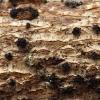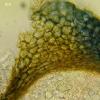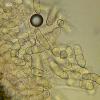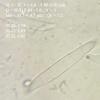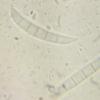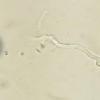
15-11-2025 23:22
Mario FilippaHello,this is what I think to be Hymenoscyphus mac

14-11-2025 16:26
 Marian Jagers
Marian Jagers
Hello everyone, On dead wood of Cytisus scoparius

15-11-2025 20:25
 Riet van Oosten
Riet van Oosten
Hello, Found by Laurens van der Linde, Nov. 2025

14-11-2025 18:31
 Lothar Krieglsteiner
Lothar Krieglsteiner
Hello,can somebody provide me with a file of:Rothe

12-11-2025 09:25
 Viktorie Halasu
Viktorie Halasu
Hello, I need help with a pale terrestric Pseudom

11-11-2025 20:16
Bohan JiaHi, lastly I have found these tiny yellow decayin

09-11-2025 13:20
Hello.A tiny ascomycete, appearing as erupting gra
Hi.
Many times I found species from this kind but have usually missed conidiophores. This time, however, both forms occur at the same time almost in every sample collected so I think conidiophores belongs to this species.
I looked through all the available articles on Gibberella but nothing could match. Finally, I found a drawing of Gibberella intricans, Wollenweber, H.W. Fusaria Autographic Delineata, EDN 3: I, 660-1100: 810 (1930).
In principle, all features match my collection.
Initially measured the spores overripe, I did not fit their width. I found a less mature fruiter whose spores with sizes correspond to those from the engravings.
Relevant note is that the spores are in most 3-septata (rarely 5-septata).
Spores;
(27.7) 27.8 - 31.2 (31.5) × (5.3) 5.9 - 7.3 (7.5) µm
Q = (3.9) 3.94 - 5.27 (5.3) ;
Me = 29.1 × 6.6 µm ; Qe = 4.4
Conidia
31.3 - 37.2 × 4.6 - 4.89 (4.9) µm
Q = (6.8) 6.84 - 7.6 ;
Me = 33.7 × 4.7 µm ; Qe = 7.2
However, I am wondering a very poor reaction to KOH?
What is your opinion on it?
greetings
Mirek

This is clearly a Fusarium ss. str.(syn.: Gibberella).
Compare with lignicolous species Fusarium lateritium Nees, ascospores as well as 3(5)-septate conidia seem to match.
Bernard
Again, I had to look a bit of literature about it and compare my.
It seems to me that you are right. Features very good fit to the genre that you offered.
Thank you very much
Mirek
